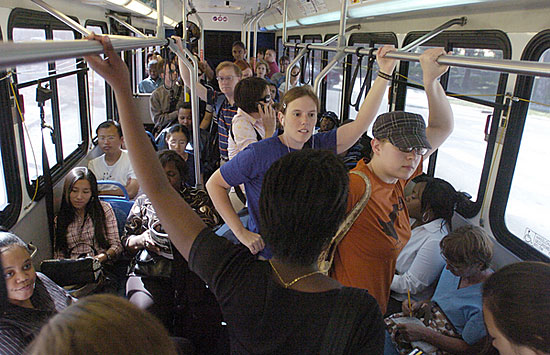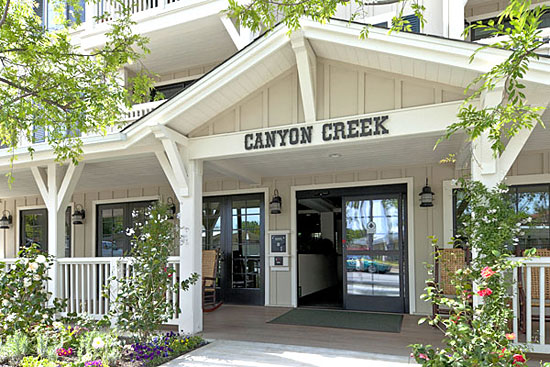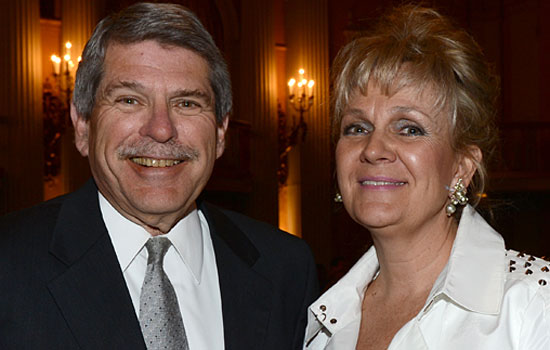Making new connections in the Valley
March 14, 2013

There’s a new ride coming to the Valley—either a light rail or rapid busway. Now’s your chance to weigh in.
First came the Orange Line, a dedicated busway in the San Fernando Valley that gives folks from Woodland Hills to North Hollywood a speedy alternative to local bus lines or traffic on the 101. Ridership on the line continues to surge, and an extension to Chatsworth opened last June.
Now the focus shifts eastward. The East San Fernando Valley Corridor project, to be routed along Van Nuys Boulevard and San Fernando Road, is about to enter its environmental review phase.
“The Van Nuys corridor is the most heavily traveled north-south route in the San Fernando Valley, with about 25,000 boardings per day,” said Walt Davis, manager of the Metro project. “There is a need for a premium service to serve those people.”
During the environmental review phase, plans for the project will be studied in greater detail and refined. This Saturday, Metro will hold the first of four meetings to present the options as they now stand, and take feedback and comments.
“It’s a chance to better define the scope of what we’ll be looking at and for the public to tell us what their concerns and needs are,” Davis said.
Two alternatives will be studied. One is a light rail option and the other is a bus rapid transit line similar to the Orange Line. Either choice would go along Van Nuys Boulevard and San Fernando Road between Ventura Boulevard and the Sylmar/San Fernando Metrolink station. (Click here for a map of the light rail alternative and here for a map of the rapid bus alternative, which includes several sub-options south of the Orange Line). The line is scheduled to begin operating in 2018.
The rail alternative is projected to generate more riders, and it also comes with a higher price tag, somewhere between $1.8 billion and $2.3 billion. The rapid bus option is projected to cost between $250 million to $500 million. Currently, only about $170 million is dedicated to the project, so more funding would need to be lined up in either case.
In addition to serving immediate neighborhoods, which include shopping centers, schools, health care facilities and civic centers, the line will provide a fast link to other transit options. It will connect to Metrolink stations in Van Nuys and San Fernando as well as to the Orange Line, which in turn links to the Red Line and the rest of the Metro rail system. The south terminus of the line will be designed to connect to a future line between the Valley and the Westside that is under study.
The public meetings will take place at the following times and locations:
- Saturday, March 16, 10 a.m. to 12 p.m. at Panorama High School, 8015 Van Nuys Boulevard
- Tuesday, March 19, 6 p.m. to 8 p.m. at the City of San Fernando Regional Pool Facility, 208 Park Avenue
- Thursday, March 21, 6 p.m. to 8 p.m. at Arleta High School, 14200 Van Nuys Boulevard
- Wednesday, March 27, 4 p.m. to 6 p.m. at Marvin Braude Constituent Service Center, 6262 Van Nuys Boulevard
In addition to the meetings, Metro for the first time will accept formal comments on social media. Go to the project’s Facebook page and click on “Submit Scoping Comments” or tweet to @EastSFVTransit using the hashtag #ESFVScoping to take advantage of this option. Formal comments may also be mailed to Metro or submitted by email to [email protected].
Posted 3/14/13
Building on Pacific Standard Time
March 14, 2013
It’s big, it’s sprawling, it’s diverse, it could only have happened in Southern California.
You could be talking about L.A.
Or you could be talking about L.A. architecture, which is the subject of a big, sprawling, diverse SoCal initiative that launches next month, courtesy of the folks who brought you Pacific Standard Time, last year’s sweeping examination of Los Angeles’s place in the post-war art world.
“Pacific Standard Time Presents: Modern Architecture in L.A.” will celebrate the megalopolis’ man-made landscape with nine exhibitions and programs around the Southland, from tours of modernist homes in Pasadena to a first-ever major survey of Los Angeles’ postwar development at the J. Paul Getty Museum.
Underwritten by the Getty Foundation, which made some $3.6 million in grants to 15 participating organizations, the spinoff is about one-sixth the size of last year’s PST. “Obviously, we can’t do an initiative on the scale of Pacific Standard Time every year,” says J. Paul Getty Trust President and CEO Jim Cuno.
Still, it’s comprehensive. The Neutra ranch houses, the Norm’s diners, the Frank Gehry landmarks, the 405 Freeway, Beverly Boulevard photographed from a car window and Wilshire Boulevard explained for participants in CicLAvia—they’re all there (and more) in shows scattered from LACMA and MOCA to the University Art Gallery at Cal Poly Pomona.
Exhibitions are scheduled to run from April through July, though the heaviest programming will run from mid-May until mid-June. For a full list of events, click here.
Posted 3/7/13
The mountains’ queen of the hill
March 14, 2013
Thirty years ago, Kim Lamorie took her first hike in the Santa Monica Mountains. As the 54-year-old activist recalls it, it was love at first sight.
“The sweeping open space, the majestic ridgelines—it made me breathless,” remembers Lamorie, who in those days was a twentysomething working in production on the Canadian “SCTV” comedy TV series.
“I came from a part of Canada that was flat, and here were these spectacular mountains in this heavily populated urban area. I thought it was the most incredible thing I’d ever seen in my life.”
The producing gigs came and went, but the allure of the mountains never faded. Today, Lamorie—named “Woman of the Year” this week for the 3rd District—is the president of the Las Virgenes Homeowners Federation, Inc., one of the mountains’ most powerful, active and far-reaching advocacy groups.
“Where I live, you can see the sun rise and the sun set over the mountains,” she says. “I see coyotes, deer, mountain lions, owls, hawks, roadrunners. When you live here, you’re just so motivated to preserve it, because you know that once this treasured habitat is gone, it’s gone for good.”
In many ways, she says, environmental activism comes naturally to her. Born in Toronto, she grew up on the shore of Lake Erie in Crystal Beach, a Canadian resort community.
“Unlike in California, which has the Coastal Commission, all of the beachfront was privately owned,” says Lamorie. “From the earliest age I can remember, my family was battling the private property interests to get public beach access. My uncle still has an organization called Shorewalk in Crystal Beach.”
Environmental concerns, however, weren’t such a priority during Lamorie’s twenties, when her job at the Second City theater troupe’s TV sketch comedy series, “SCTV,” brought her to California. (“We set up offices at one point to write in Studio City and then went back to Toronto to shoot the episodes,” says Lamorie.)
Lamorie worked on the show’s syndication package in 1984 after “SCTV” stopped shooting, and ended her stint as an associate producer of a follow-up special. But eventually, like the show’s famed cast, from Martin Short to John Candy, Lamorie moved on.
And when her daughter, Krista, was born 17 years ago, Lamorie scaled back her involvement in show business.
For more than 20 years, Lamorie and her family have lived in a 3-bedroom house in the Santa Monica Mountains, on a hilltop near Calabasas that, like the mountains, she loved on sight. It was that affection, she says, that launched her activism.
“There was a development project that the local Calabasas Highlands Homeowners’ Association was fighting,” she remembers. “They were bulldozing over magnificent oak woodlands and scrub oak habitat, and you become protective of the place you live in, so I started to get active. And as soon as I met the activists in the Federation, I thought. ‘Oh. My. God. They’re just like me.”
Over the years, Lamorie has assumed ever greater leadership roles, first as a delegate, then as vice-president and then as president of the Federation, which advocates for policy on behalf of mountain communities spanning the Las Virgenes Valley.
Fellow activists say her fact-based approach and infectious energy have not only boosted involvement, but focused disparate constituencies on critical missions, from protecting oak woodlands and water quality to curbing development on pristine ridgelines. Last year, the Federation sent busloads of residents to testify against a redistricting plan that threatened to put the mountains into the same district as the Ports of Los Angeles and Long Beach.
“That job is like herding cats, but herding cats with a purpose,” says Steve Hess, an engineer and small business owner from the unincorporated community of Cornell who spent four years, from 2003 through 2006, at the helm of the Federation. “Kim has taken the Federation to the next level and given it a louder voice.”
“She not only knows all the facts on an issue, but she knows how to get things accomplished,” agrees Nancy Rothenberg, a neighbor of Lamorie and former president of the Calabasas Highlands HOA.
“She’s very savvy. And she has an encyclopedic mind for all the minutiae you need to know to effect any change.”
In a speech this week accepting the Woman of the Year honor, Lamorie credited her progressive Swedish mother and her fellow activists, “the real stewards and warriors who are not motivated by money, power or greed, but who are driven to preserve something so undeniably valuable.”
Next on her agenda? Protecting the California Environmental Quality Act from what she skeptically refers to as “quote-unquote ‘modernization’.”
And her opponents shouldn’t underestimate her, says Mary Ellen Strote, vice president of the Federation.
“Like any good leader, she picks her battles,” Strote says. “But no matter how powerful or well-funded her opponent, when the stakes are the Santa Monica Mountains, she never backs down.”
Posted 3/14/13
Drivers will get a charge out of this
March 7, 2013
Step away from that gas tank, Southern California commuters, and prepare for a jolt of good news: By this time next year, Los Angeles County will have more than 100 new charging stations for plug-in hybrid and electric vehicles.
Last month, Metro announced that five park and ride stations would each soon be installing four Level 2 chargers, enough to accommodate about eight vehicles per station at any given time.
Now the Los Angeles County Board of Supervisors has set the stage for 93 more stations around the county, approving grants and funding this week for public chargers at 40 more sites from the Music Center to county hospitals.
Tom Tindall, director of the county’s Internal Services Department, says the move will not only help shrink the county’s carbon footprint, but also responds to a growing demand among plug-in and EV owners for places to recharge. Though alternative vehicles have been slow to catch on among commuters in some parts of the country, Southern California’s malls and parking garages have been increasingly jammed with drivers of all-electric vehicles known as EVs (the Nissan Leaf, for example) and plug-in hybrids (such as the Chevrolet Volt or Toyota’s plug-in Prius) competing for too few outlets. (Both types of vehicles need to be plugged in, but EVs are strictly electric while plug-ins have a combustion engine as well as a battery that runs on electricity.) Some automotive bloggers are even reporting that “charging congestion” here has begun to replace “range anxiety” as the chief downside of going electric.
“More than a third of the EVs in the United States are registered in California, and over 40 percent of all the plug-in EVs sold in California are registered in Southern California Edison’s territory,” says Tindall. “This will provide charging areas that are convenient for both the public and county employees.”
Marie Nuñez, who oversees parking and fleet operations for ISD, says the new stations will begin opening in August, with the rollout complete by the end of the year. Some of the new stations will replace old and long-since decommissioned chargers at county garages, she says, but most will be new additions capable of charging up to two vehicles at one time. Locations will be released to web sites that list charging locations as they become available.
“We’re going to replace the three old-style chargers at the Music Center,” she says, “and we’re going to put four in at Walt Disney Hall. The county Arboretum and the Department of Public Works will each have three for the public. Lot 10 under Grand Park will get four chargers. The county hospitals will all get two to four chargers each, and the beaches at Marina Del Rey and Playa Del Rey will each get two. There should be enough to charge at least 150 cars at any given time.”
All will be outfitted with standard connections to accommodate the increasing numbers of Volts, Priuses, Leafs and other EVs and plug-ins being used by the public and the county fleet, says Nuñez, adding that 80 percent of the $384,687 cost of purchase and installation will be offset by two grants.
The rest of the outlay will come from existing budgets at participating county departments, which will pay a net cost of $778 per station. Ordinarily, Nuñez adds, commercial chargers cost about $4,000 each.
Nuñez says drivers can expect to be charged a nominal fee to cover the cost of electricity and maintenance, though details are still being worked out. Payment may be by credit card or smart phone, or may follow a subscription model similar to the one Metro is trying. Under that method, an hour of charging costs about $1.
Tindall expects the new stations to be popular with county employees as well as the public. “These are way stations for commuters, too,” he says.
As it is, he laughs, the alternative crowd has been making its needs known: “I’ve seen Volts parked in a couple of garages where people have plugged them in with extension cords.”
Posted 3/7/13
More affordable housing in the works
March 7, 2013

With affordable housing in short supply, the Canyon Creek development in Calabasas helps meet a growing need.
In a compromise intended to bolster the county’s supply of affordable housing even in times of budget uncertainty, the Board of Supervisors this week unanimously voted to set aside $15 million to build low- and moderate-income units.
At least half of the money will go to housing for the homeless and people with special needs.
Affordable housing projects across the county have been in limbo since the state moved to dissolve local redevelopment agencies last year. Since then, L.A. County has received some $75 million in unused affordable housing funds from the dissolution of the agencies.
A motion by Supervisors Gloria Molina and Mark Ridley-Thomas initially proposed that the entire $75 million be placed in an affordable housing trust fund to be used to fund projects over the next five years.
However, with looming uncertainty about coming demands on the county’s 2013-14 budget, Supervisor Zev Yaroslavsky offered a substitute motion to allocate $15 million now and decide what to do with the rest of the funds during the upcoming budget process. He said he supports devoting the funds to affordable housing in future years if the budget allows for it. The board approved the motion 5-0.
Before the vote, the board heard from a series of affordable housing advocates.
“Every night, over 8,000 homeless veterans sleep on L.A.streets, under bridges, in parks and in encampments. Nearly 2,500 of these homeless men and women have been on the streets for a year or more, and many struggle with PTSD, addictions to drug and alcohol, and chronic health conditions like hepatitis, heart disease, diabetes and HIV. The number of women veterans ending up on our streets is increasing at an alarming rate,” one of the speakers, Gigi Szabo of New Directions, told the supervisors. “Please help us create more housing for veterans by making sure that the money goes to affordable housing development.”
Maura Johnson of the Hollywood Community Housing Corporation added: “We have three projects that would greatly benefit from immediate funding,” including a transit-close development in the Third District featuring 54 units for families.
Affordable housing is priced for those making less than the area median income. According to a 2012 Regional Planning report, they range from a single person earning $17,750 or less annually to a family of four making $67,450 or less. Such housing represents a small fraction of the county’s overall housing stock. The Southern California Association of Governments has estimated that the unincorporated areas of the county alone need to add more than 30,000 units of extremely low- to moderate-income housing by 2014.
Posted 3/7/13













 Check for the latest closure information
Check for the latest closure information








